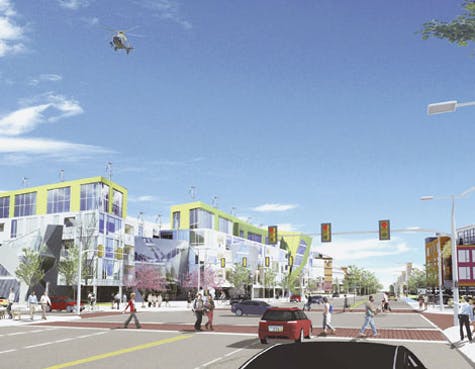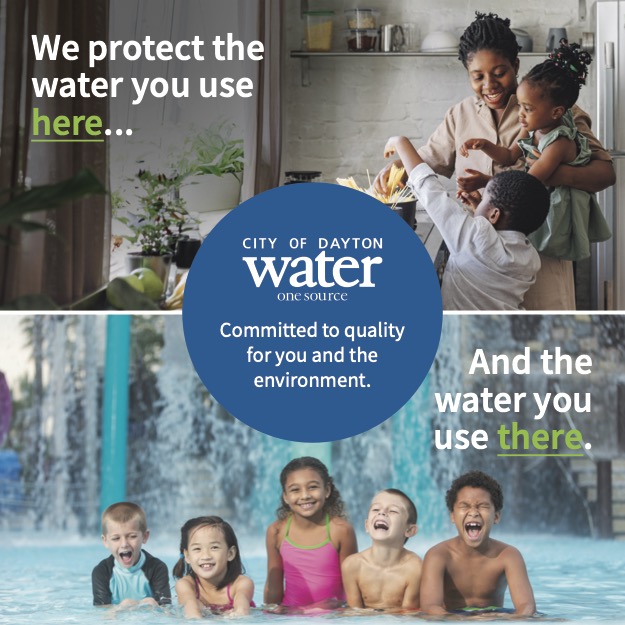
Cleveland Innovation Project sets aggressive ten-year plan
By Terry Troy
The Cleveland Innovation Project, a collaboration of the Greater Cleveland Partnership, Cleveland Foundation, Fund For Our Economic Future, JumpStart and TeamNEO, outlined an aggressive ten-year plan during its recent annual meeting to address the immediate and long-term impacts of the coronavirus pandemic while driving northeast Ohio’s hi-tech growth moving forward.
“In March, we asked ourselves, ‘What can we do now to get us through the pandemic and help our community emerge in a position of strength?’ ” said Scott Chaikin, chair of the GCP board of directors and executive chairman of the public relations firm Dix & Eaton at the meeting.

Guided by a Steering Committee of corporate and civic leaders, the project has identified strategic sectors primed for development as well as initiatives to bolster the innovation ecosystem to strengthen the region’s technology-based economic growth and prosperity for all Greater Cleveland residents.
“Since GCP was founded, a primary focus of the organization has been partnering with others to improve the economic vitality of the region,” said Joe Roman, president and CEO at GCP. “We recognize that if we align agendas and collaborate more deeply across the region, we can accelerate and amplify positive impact in the community,”
Based on a review of the region’s innovation assets and industry clusters, market trends, and input from more than 150 business, entrepreneurial, institutional, and civic leaders, three strategic sectors emerged as having the most powerful combination of strengths, opportunities, impact potential, and readiness for scaled growth efforts. These include: smart manufacturing, health innovation , and water technologies.
Within each sector, the focus is on expanding platforms that connect innovators, institutions, entrepreneurs, and industry to leverage technologies and digital applications for creating new products, services, and companies.
These three strategic sectors will be enhanced by four initiatives to strengthen the region’s innovation ecosystem, including: boosting digital/STEM talent; providing access to capital, expediting digital equity across the region, and developing innovation zones, including the area’s new Opportunity Corridor and Health-Tech Corridor, areas located adjacent to the Cleveland Clinic and University Hospitals campuses.
Those initiatives are designed to address both business growth and talent development. Each initiative is comprised of multiple programs that will be coordinated and integrated, and each initiative will regularly review progress and make necessary adaptations to achieve its goals and the overall vision.
“Through this unprecedented collaboration across sectors and organizations, we have an opportunity to fuel technology-driven growth that creates family-sustaining wage jobs for all skill levels and benefits our entire community,” said Ronn Richard,
president and CEO of the Cleveland Foundation. “Inclusive innovation is critical to Cleveland’s future.”
“While the COVID-19 crisis has created new economic and health challenges requiring our continued attention, accelerating our technology-led innovation economy with a focus on inclusive growth offers Cleveland an opportunity to strengthen its recovery,” said Ray Leach, CEO of JumpStart.
The Project has set the following cumulative goals for the region to achieve by 2030:
1.) 20,000 additional tech-led innovation jobs, with 25% held by Black or Latinx individuals and 50% held by women.
2.) 20,000 additional digital or STEM graduates educated and retained, or attracted to Cleveland, with 25% being Black or Latinx and 50% being women.
3.) $2 billion in increased targeted research investment.
4.) $4 billion in total invested capital in tech-led companies, with 25% of companies having Black or Latinx executives and 50% having women executives.
5.) 100% of Greater Cleveland households with high-quality broadband connectivity by 2022
6.) 2 million square feet of new institutional, commercial, residential, and community development in the Health-Tech and Opportunity Corridors.
“The work of the Cleveland Innovation Project in many ways responds to the call we put forth in The Two Tomorrows to address our region’s economic underperformance and to confront and eliminate racial inequities in our outcomes,” said Bethia Burke, president of the Fund For our Economic Future. “We need to change our collective aspirations, pegging success not just to growth but who benefits from growth, and these goals are a good starting point.”
From its inception, the Project has been designed as a catalyst and connector that builds upon and works with existing institutions and organizations across the region. This network approach enables efficient and effective execution and encourages collaboration across the portfolio of initiatives and the ecosystem.
“We have been focused on developing a strong, collaborative system across companies, institutions, and economic organizations,” said Bill Koehler, president and CEO of TeamNEO. “Through that alignment, we can significantly advance the region and benefit its residents.”
The alliance partners recruited Baiju R. Shah, Senior Fellow for Innovation at the Cleveland Foundation, earlier this year to lead the Project.



